Similar Yet Distinct: How to Tell the Difference Between Edwardian & Art Deco Jewelry
Is it Edwardian or Art Deco? Sometimes it can be difficult to discern the difference between jewelry from these historically rich jewelry eras. The Edwardian era (1901-1915) and Art Deco era (1920-1930s) share many of the same early 20th century visual characteristics. Yet, separated by the First World War, the two eras have distinct jewelry styles whose differences can range from subtle to quite notable. Alex Cooper’s May 13th auction will feature some very fine Edwardian and Art Deco pieces that illustrate the easily confused differences between the two eras.
Like the Georgian and Victorian eras that preceded it, the Edwardian era takes its name from the contemporary reigning English monarch—in this case, King Edward VII. Prior to the outbreak of the First World War, the Edwardian era was a time of overall economic prosperity across much of Europe. Edwardian jewelry was emblematic of a sophisticated, affluent lifestyle and provided a means by which the upper class could advertise their wealth to their peers. The era is also marked by great technological innovation. The 1903 invention of the oxyacetylene torch allowed jewelers to work with the extremely high temperatures necessary to craft platinum into delicate, lace-like designs with fine milgrain detail (a very tiny beaded pattern that finishes the edge of a piece of jewelry).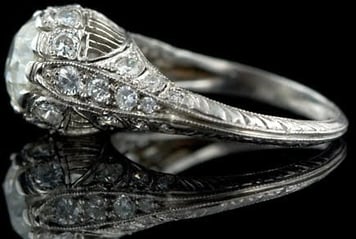 Milgrain detail, photo credit: Lang Antiques Milgrain detail, photo credit: Lang Antiques |
Common Edwardian motifs include garlands, bows, ribbons, and tassels inspired by the opulent 18thcentury Rococo themes on display at the Court of Versailles. Often referred to as “white jewelry,” Edwardian pieces combine the graceful airiness of platinum—a “white metal”—with white diamonds, providing somewhat limited opportunities for the inclusion of colored gemstones. A holdover from the Georgian and Victorian eras, rose-cut diamonds—diamonds cut with a flat bottom and pointed top—are typically used as accent stones in Edwardian jewelry.
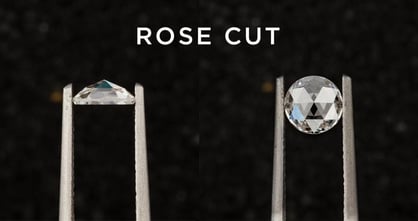
Rose cut diamonds, photo credit: Apres Jewelry |
Art Deco jewelry trades the light and airy creations of the Edwardian era for bolder geometric designs, reflecting fashion changes prompted by women’s evolving roles during the war. Named after the 1925 Exposition International des Arts Décoratifs et Industriels Modernes in Paris, Art Deco jewelry was inspired by modern industry and the machine age. Jewelry from this time employs cleaner, more rigid lines with less ornamentation than Edwardian jewelry. White metal was still in favor in the Art Deco era, but, with platinum scarce after the war, white gold became more common. Like the Edwardian era, white diamonds often take center stage in Art Deco jewelry, but they are frequently accented by colored gemstones in “calibré” cuts—meaning they are custom cut to fit a specific design.
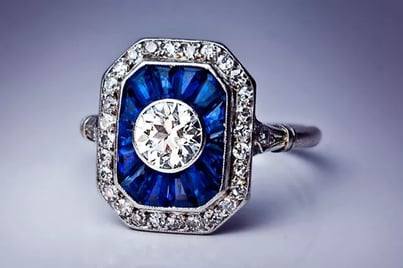 Calibre cut sapphire, photo credit: 1st Dibs Calibre cut sapphire, photo credit: 1st Dibs |
Lot 182 is a stunning emerald and diamond brooch set in platinum. The intricate, openwork foliate design set with old European and rose-cut diamonds immediately dates this piece to the early 20th century. The milgrain edges are a hallmark of both the Edwardian and Art Deco eras, and a central rectangular cut emerald set in a milgrain bezel adds just the right pop of color to this elegant piece of jewelry. However, the brooch’s lace-like delicacy, rose-cut diamonds, as well as the manner in which the old European cut-diamonds appear to float in midair make the piece a work of the Edwardian era.
Lot 188, a rectangular-shaped diamond ring in platinum, is an excellent example of jewelry that blurs the lines between Edwardian and Art Deco. The ring boasts three old European-cut diamonds set in a vertical orientation with milgrain bezels and a frame of single cut diamonds with milgrain edge. While the white metal, white diamonds and milgrain detail are all attributes of Edwardian jewelry, the ring’s rigid geometry and straight lines place this piece more comfortably in the Art Deco era.
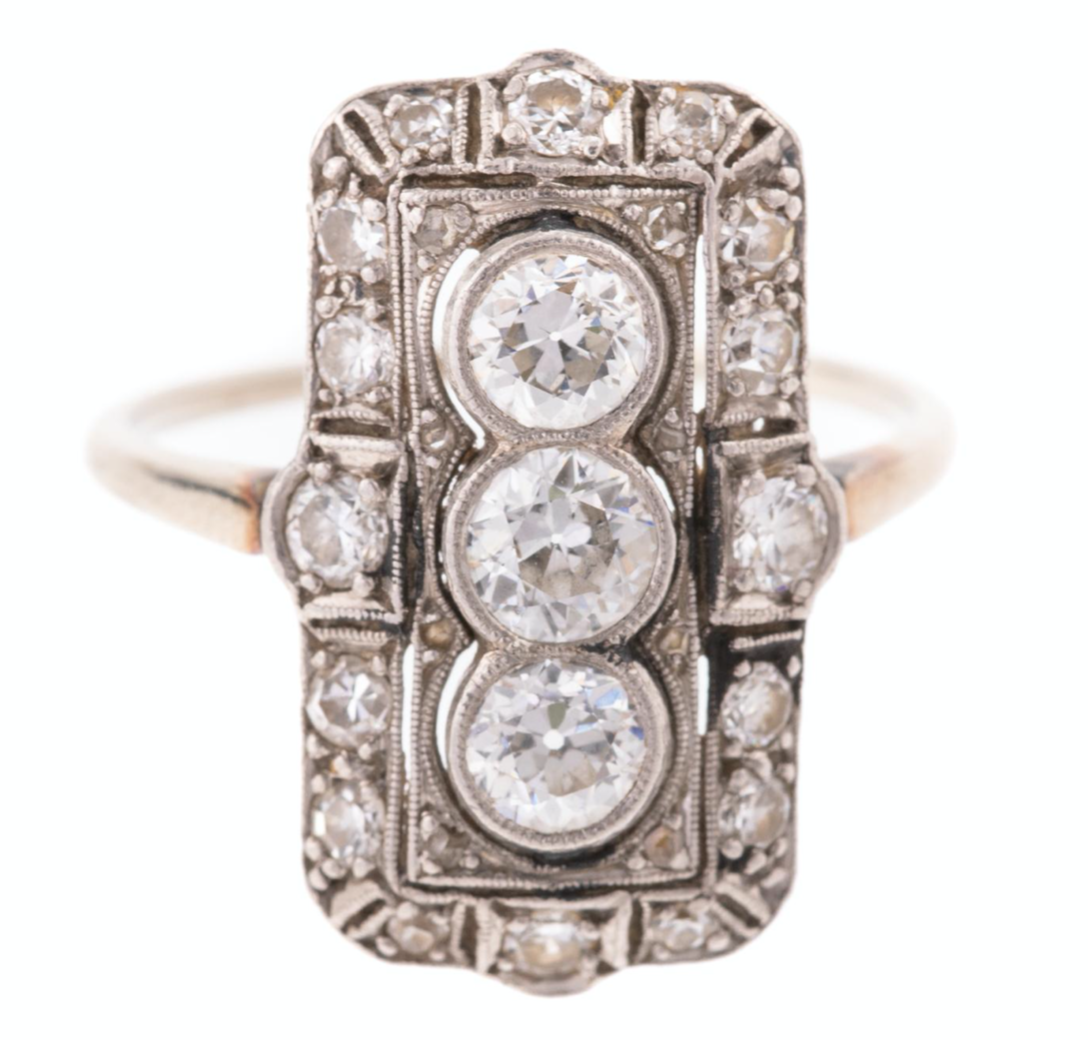 |
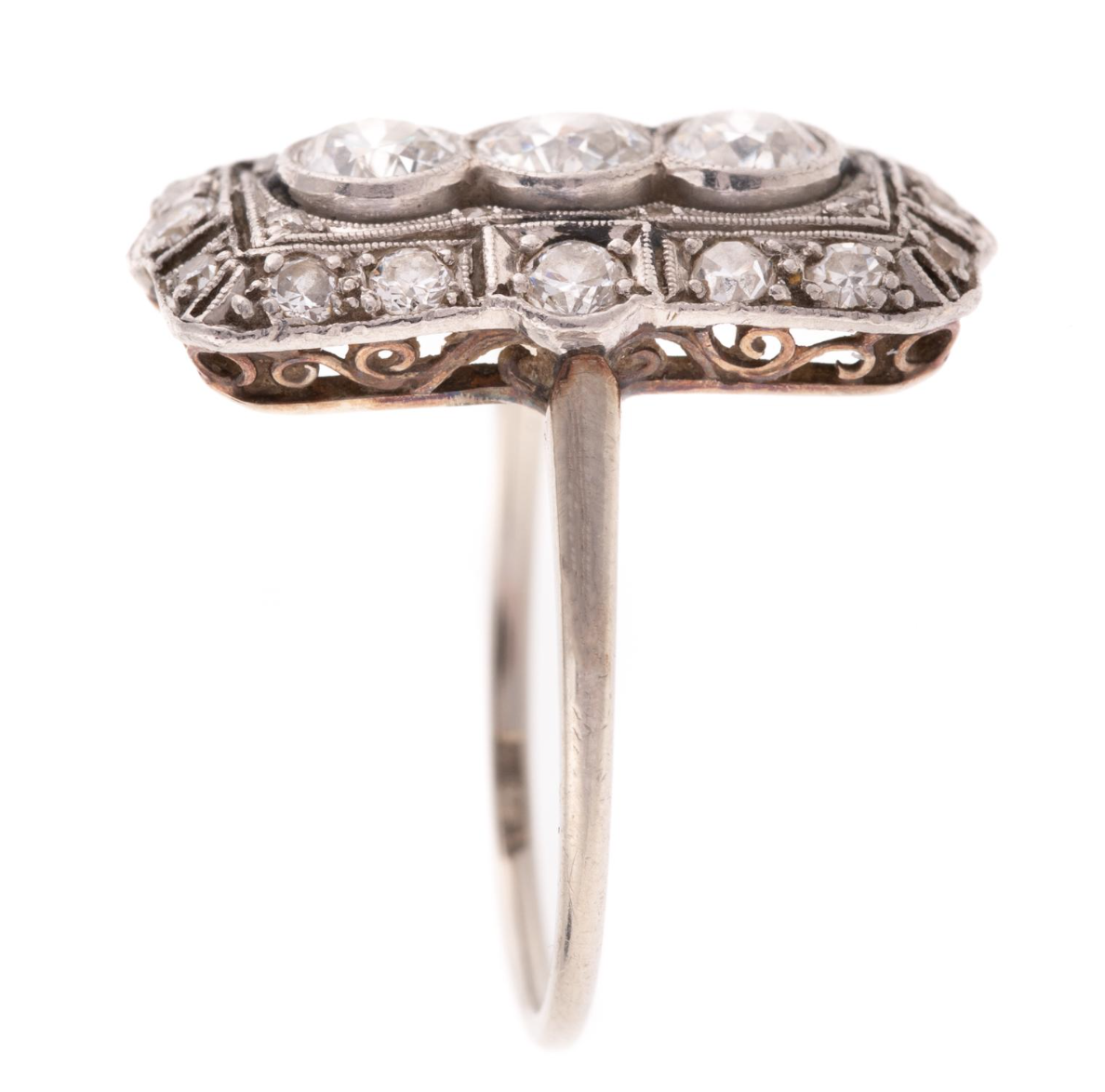 |
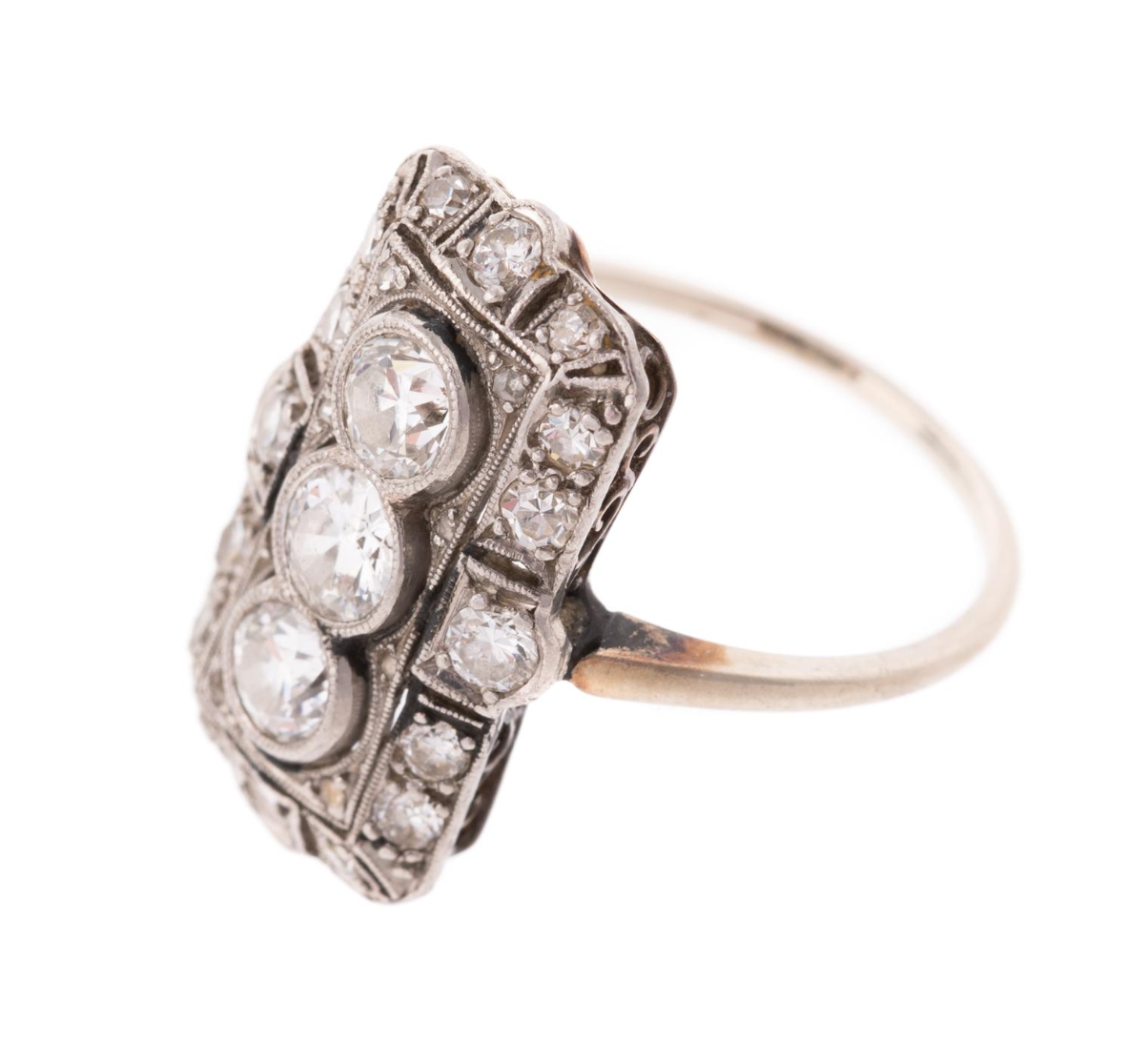 |
Lot 269, on the other hand, is a classic illustration of the Art Deco style. The platinum watch features single and old European-cut diamonds with milgrain detail and is accented by calibré cut sapphires. Very fine hand-graved detail runs along the sides of the watch case and the back bears the initials of the previous owner from a different chapter in the watch’s long, storied life.
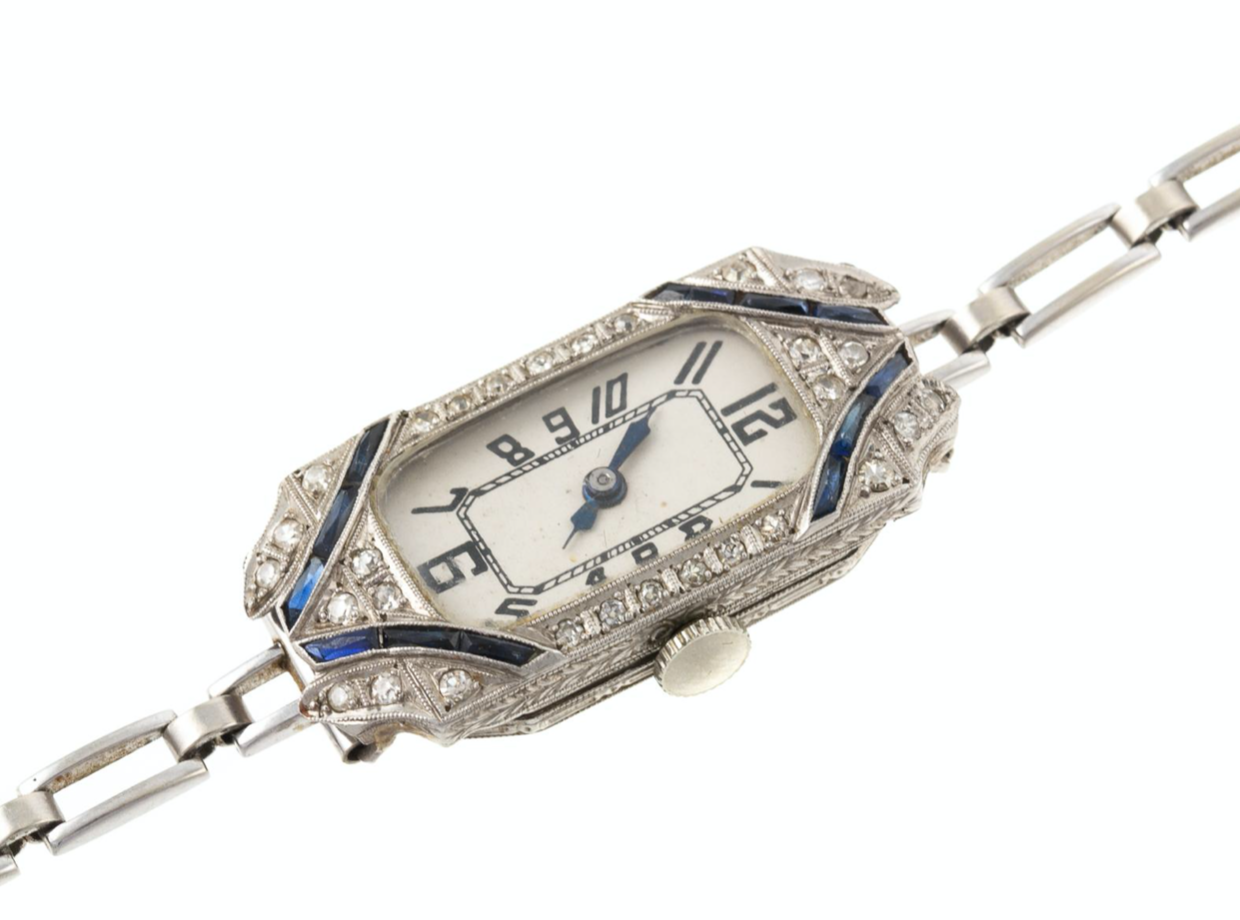
|
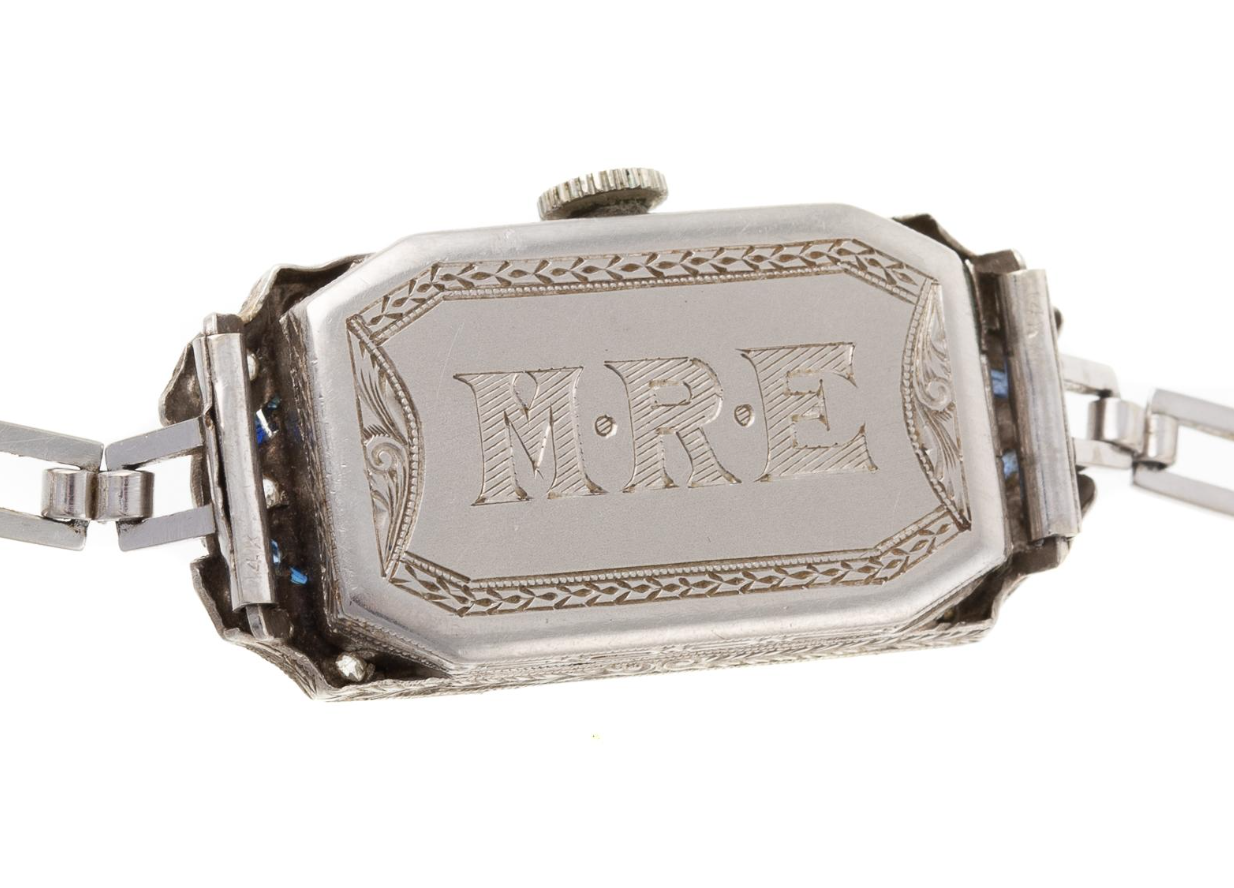
|
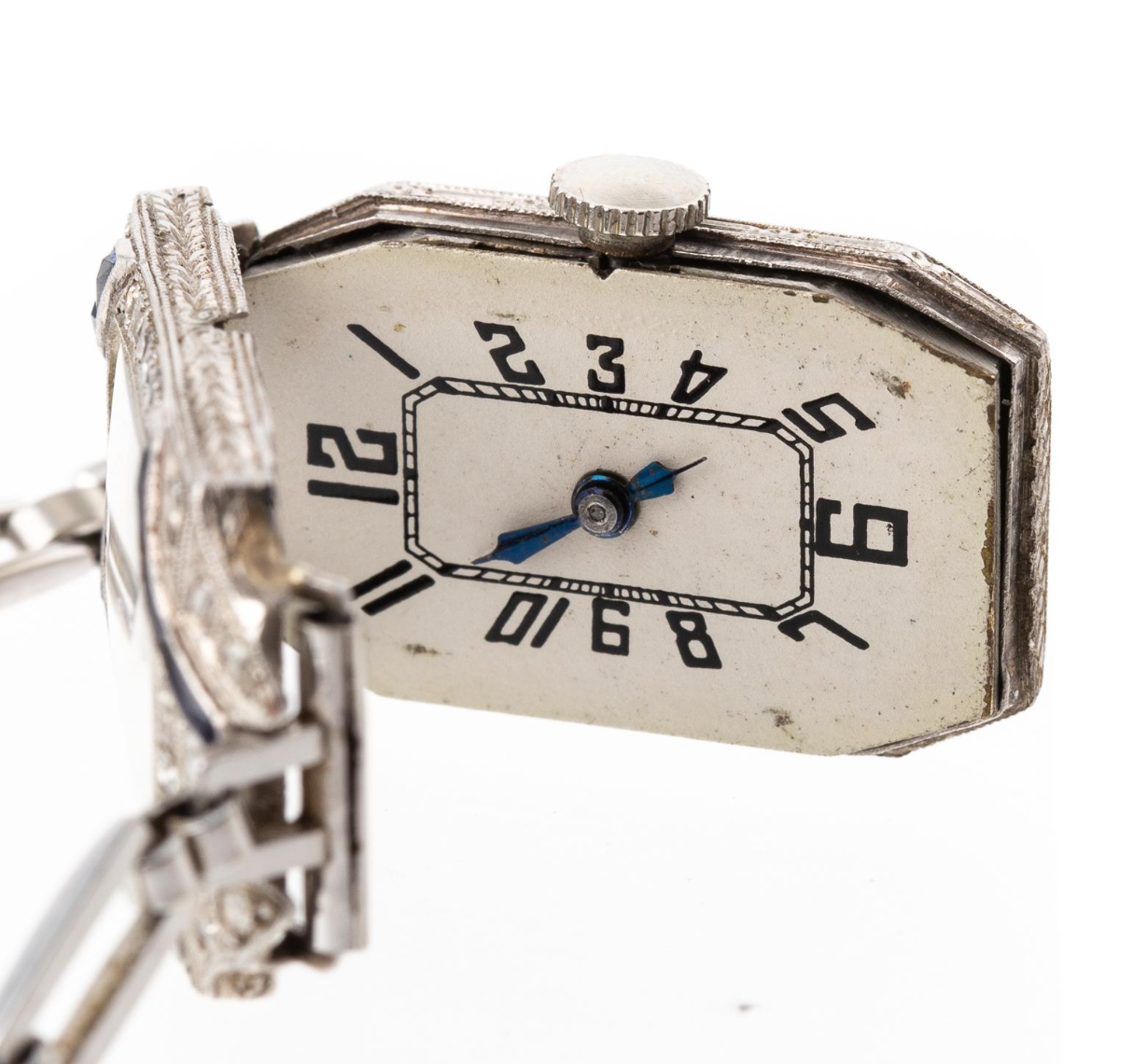 |
Browse more Edwardian & Art Deco jewelry in our May 13th auction here.
Erin Riggins-Hartlaub
Specialist of Fine Jewelry
erin@alexcooper.com